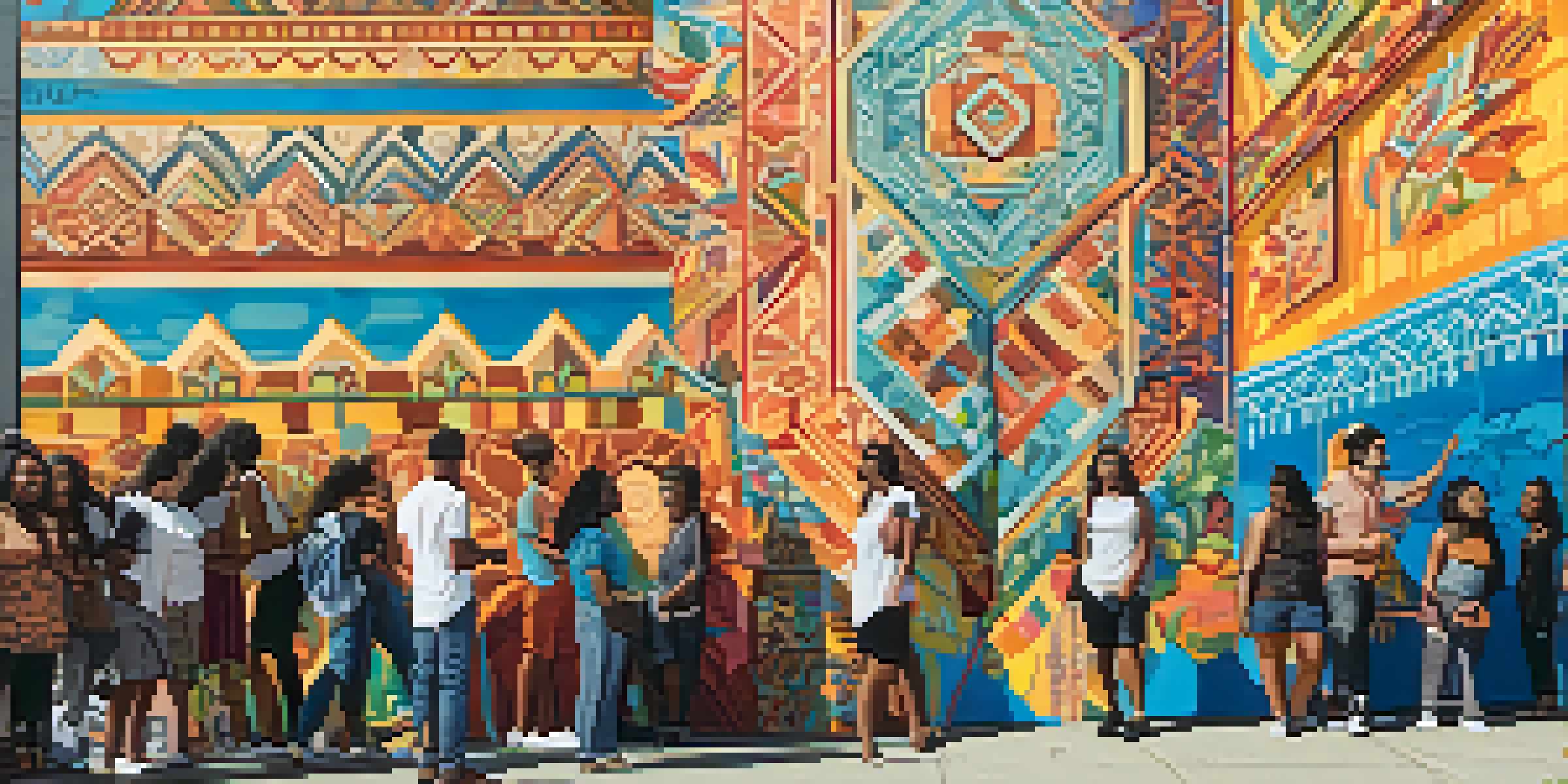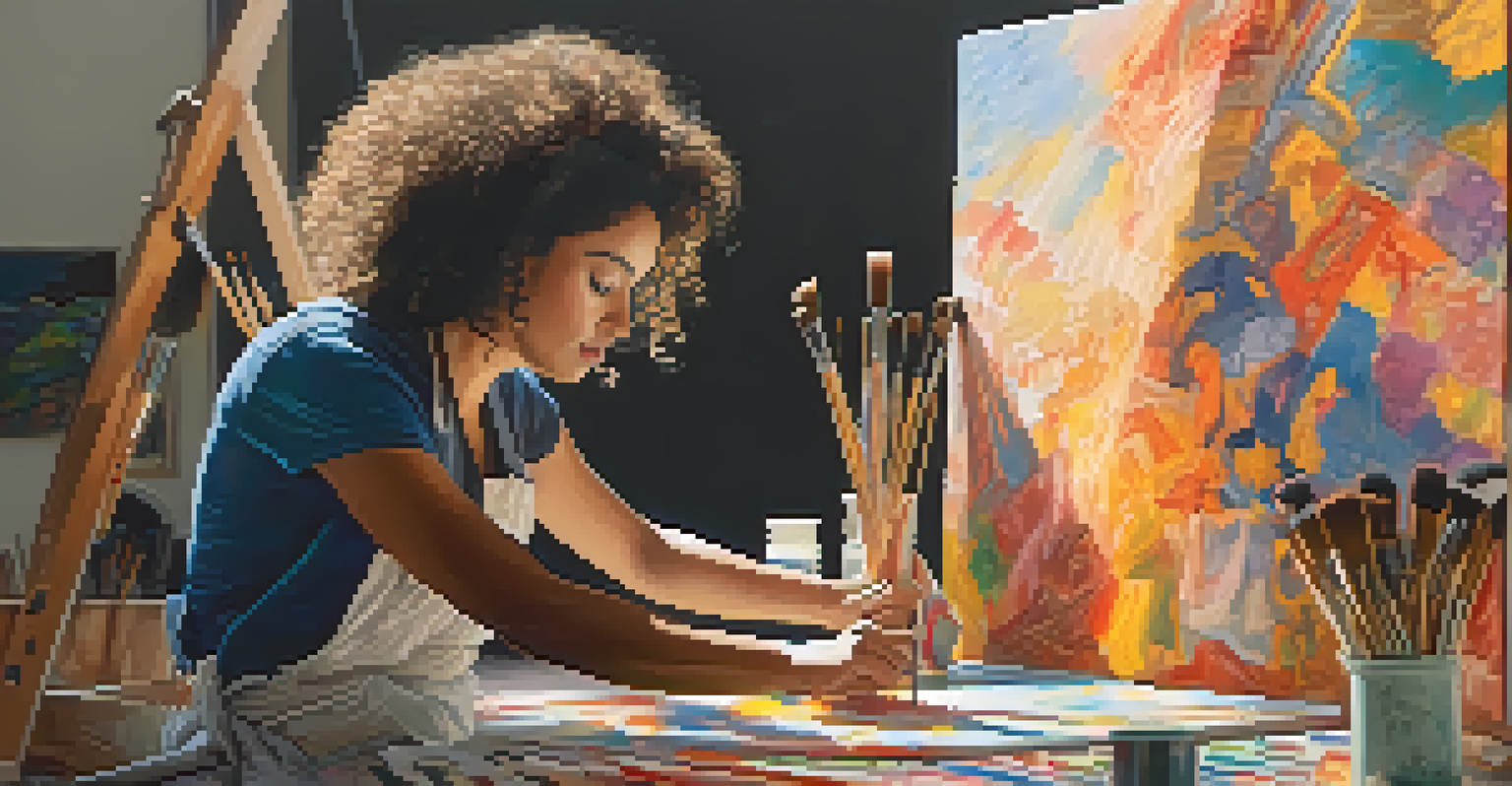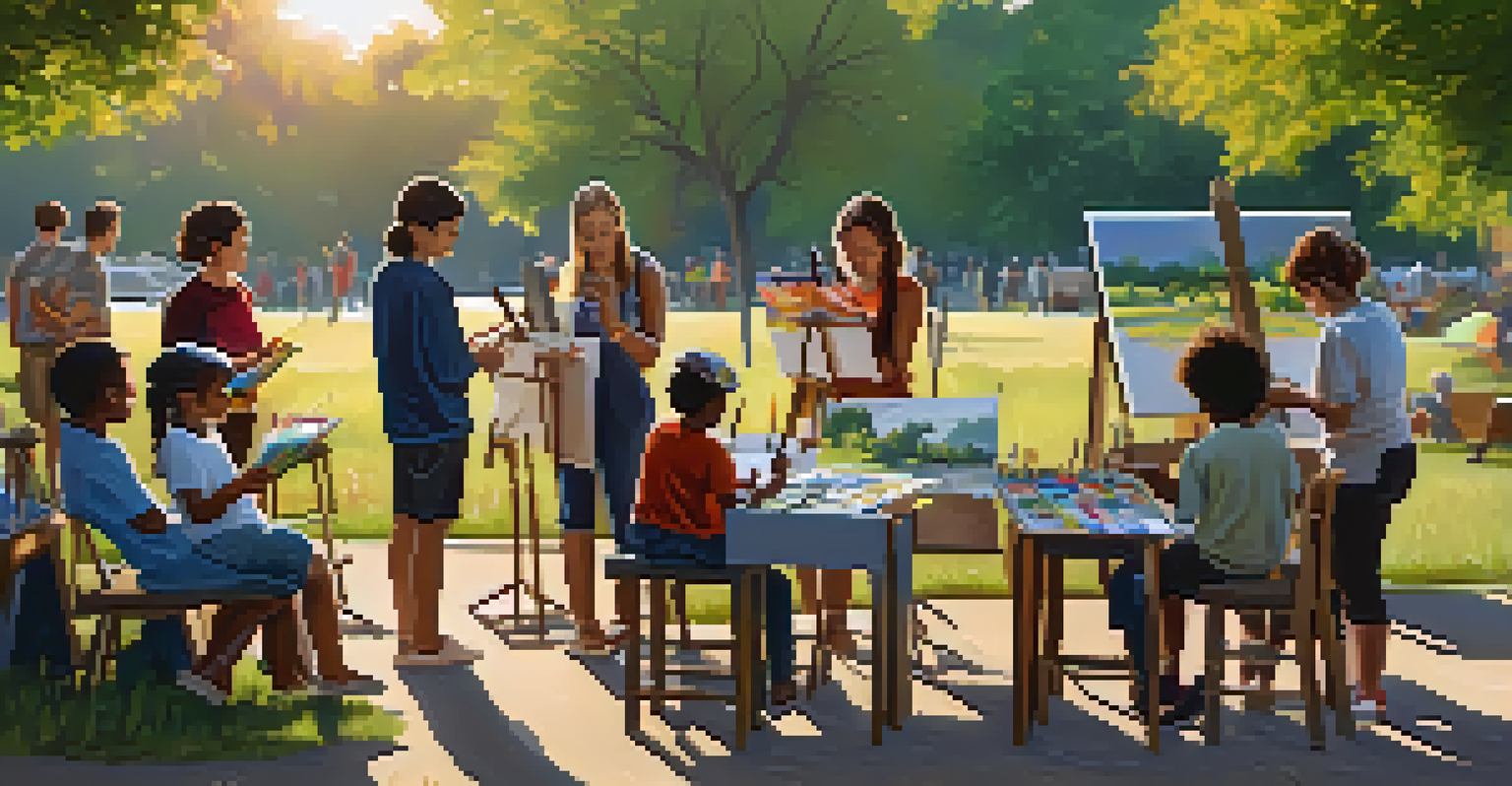The Role of Art in Celebrating Human Diversity and Experience

Art as a Reflection of Cultural Diversity
Art serves as a mirror reflecting the myriad cultures and experiences that define humanity. Through paintings, music, dance, and literature, artists express their unique backgrounds and perspectives. For instance, traditional African masks tell stories of heritage and spirituality, while contemporary street art often highlights social issues and community voices. This cultural expression fosters an appreciation for the rich tapestry of human experience.
Art is the most beautiful of all lies.
When we engage with art from different cultures, we gain insights into the values, struggles, and triumphs of others. This connection can break down barriers and promote empathy, allowing us to see the world through someone else's eyes. In this way, art not only celebrates diversity but also encourages dialogue about our differences and similarities.
Moreover, art can challenge stereotypes and misconceptions by presenting alternative narratives. For example, films that portray the lives of marginalized communities can shift public perceptions and foster understanding. By showcasing the beauty and complexity of diverse cultures, art becomes a powerful tool for promoting social change and unity.
Art as a Means of Personal Expression
Art is not only a reflection of cultures but also a deeply personal outlet for individuals. Each artist brings their unique experiences, emotions, and viewpoints to their work, making it a profound form of self-expression. Whether it’s through a heartfelt poem or a striking piece of visual art, creators often share their personal journeys, allowing others to connect with them on a human level.

This personal expression is crucial for celebrating human diversity, as it highlights the individuality that exists within larger cultural narratives. For example, LGBTQ+ artists often explore themes of identity and acceptance in their work, providing visibility to their experiences and struggles. By doing so, they create a sense of community and belonging, inviting others to share their own stories.
Art Reflects Cultural Diversity
Art serves as a mirror, showcasing diverse cultures and fostering empathy by allowing us to see the world through different perspectives.
Furthermore, personal narratives expressed through art can inspire others to embrace their differences. When individuals see their experiences reflected in someone else's work, it can empower them to share their voices and stories. This ripple effect is essential for fostering a more inclusive and understanding society.
Art as a Tool for Social Commentary
Throughout history, art has been a powerful means of social commentary, used to address pressing issues such as inequality, injustice, and war. Artists often use their platforms to raise awareness and provoke thought, challenging audiences to confront uncomfortable truths. For example, the powerful imagery in Picasso's 'Guernica' captures the horrors of war, serving as a timeless reminder of its devastating impact.
The role of the artist is to make the revolution irresistible.
In contemporary society, street art and murals have emerged as significant forms of protest, giving voice to marginalized communities. Artists like Banksy use their work to comment on political and social issues, effectively turning public spaces into canvases for change. This accessibility allows diverse perspectives to be visible and heard, democratizing art and its messages.
By engaging with art that addresses social issues, audiences are encouraged to reflect on their own beliefs and actions. This can spark conversations that lead to greater understanding and advocacy for change. In this way, art plays a crucial role in not only celebrating diversity but also in challenging societal norms.
Art as a Unifying Force
Art has the remarkable ability to bring people together, transcending language and cultural barriers. Whether through music festivals, art exhibitions, or collaborative projects, artistic expressions foster connections among diverse groups. These shared experiences create a sense of community, reminding us of our shared humanity, despite differences.
For instance, global music festivals often feature artists from various backgrounds, celebrating different genres and cultures. This collaboration fosters appreciation for diversity while also creating a shared space for joy and unity. When people come together through art, they create bonds that can bridge divides and promote understanding.
Art as Personal Expression
Through personal narratives, art highlights individuality within cultural contexts, empowering voices and inspiring inclusivity.
Moreover, community art projects can empower individuals to collaborate on local issues, fostering a sense of belonging and shared purpose. These initiatives often highlight the unique stories and experiences of a community, celebrating its diversity while working towards common goals. Ultimately, art acts as a unifying force, encouraging collaboration and solidarity.
Art and the Celebration of Identity
Art plays a vital role in celebrating individual and collective identities. Various art forms allow people to express their cultural heritage, personal stories, and unique experiences. From traditional crafts to modern installations, each creation can serve as a testament to one's identity, helping to preserve and promote cultural narratives.
For example, Indigenous artists often use their work to connect contemporary life with traditional practices, ensuring their culture remains vibrant and relevant. This celebration of identity not only honors their ancestors but also educates others about their rich histories. By showcasing these narratives, art fosters respect and appreciation for diverse identities.
Additionally, identity-focused art can challenge dominant narratives, offering alternative representations that enrich our understanding of the world. When we engage with art that reflects diverse identities, we broaden our perspectives and deepen our appreciation for the complexity of human experience. Art becomes a powerful means of recognizing and valuing the many facets of who we are.
The Role of Art in Healing and Resilience
Art can be a profound source of healing and resilience, particularly for individuals and communities facing adversity. Creative expression allows people to process their emotions and experiences, providing a therapeutic outlet for pain and trauma. Whether through painting, writing, or music, art can facilitate healing by giving voice to those who have been silenced.
For instance, community art programs often provide safe spaces for individuals to share their stories and connect with others. These initiatives empower participants to reclaim their narratives and foster resilience, transforming pain into powerful expressions of strength and hope. Art can thus serve as a catalyst for personal and collective healing.
Art's Role in Social Change
Art acts as a catalyst for social commentary, challenging societal norms and encouraging dialogue around pressing issues.
Moreover, the act of creating art can instill a sense of purpose and agency, helping individuals navigate challenging circumstances. When we engage with art, we tap into our creativity and resourcefulness, enabling us to envision brighter futures. In this way, art celebrates the human spirit's resilience and capacity for growth, even in the face of adversity.
The Future of Art in Celebrating Diversity
As we move forward, the role of art in celebrating human diversity will continue to evolve. With advancements in technology, artists have new platforms to share their work, reaching wider audiences and fostering global connections. Social media, virtual galleries, and digital art forms are expanding the ways we engage with diverse artistic expressions.
This evolution presents exciting opportunities for collaboration and cross-cultural dialogue. Artists can now work together across borders, blending styles and traditions to create innovative works that celebrate diversity. This interconnectedness can enrich the global art scene, offering fresh perspectives and narratives that reflect our shared humanity.

Moreover, as society becomes more aware of the importance of inclusivity, we can expect a greater emphasis on diverse voices in the art world. Organizations and institutions are increasingly prioritizing representation and equity, ensuring that a wide range of artists have the opportunity to share their stories. This commitment to inclusivity will undoubtedly shape the future of art as a celebration of our diverse human experience.